Many housewives love to sew various things with their own hands. Knitted clothing is always affordable and comfortable. Sometimes there is a desire to create something pleasant to the touch of knitwear. But as soon as the sewing process begins, the whole mood disappears. The work does not go well: the thread breaks, and the seam is very bad.
In this situation, many are wondering what needs to be done to fix this problem. To this question you will receive ambiguous answers. And what you do, decide for yourself.
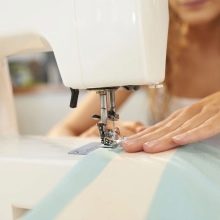
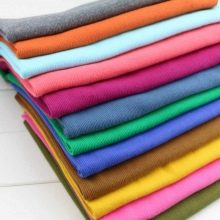
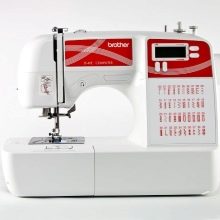
Why can't I flash the material?
Amateur seamstresses often complain that they cannot sew 2 knitted halves on a household sewing machine. The lower thread winds and breaks. On the implementation of a straight line and no question. And there is nothing surprising, since seamstresses are simply not able to carry out operations such as sewing knitwear. However, if you try, you can still achieve the desired result. First you need to configure the machine to work flawlessly.
Lubricate, tighten loose parts. Here you need to seek help from a professional. However, this can not be done if you bought a new model. In most cases, such machines do an excellent job of different tasks and perform a large number of different seams.
However, you need to know that For sewing knitwear, a special knitting machine is used, which performs a rear seam resembling a pigtail. Professionals call such highly specialized models as openers or machines for chain stitching.

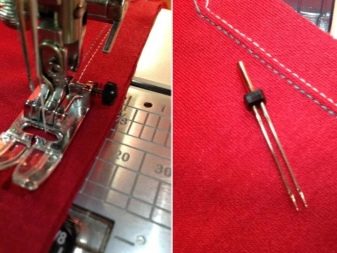
If you continue to consider this issue further, then keep in mind that overlocks are considered the best models for sewing fabrics such as stretch and knitwear. On them, a differential rail is mandatory installed, which has a lining of the grinding chain stitch. Not the last role in the successful sewing of stretching fabrics is played by specially selected threads and needles. If their size and quality do not meet the requirements, then you will not be able to complete the task even on a special machine.
A thick or improperly selected needle is not suitable for sewing delicate fabrics. Just keep in mind that it is impossible to sew jeans and a thin T-shirt alternately on the same equipment without special settings.
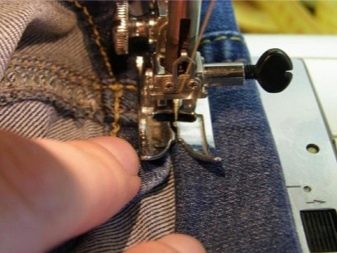
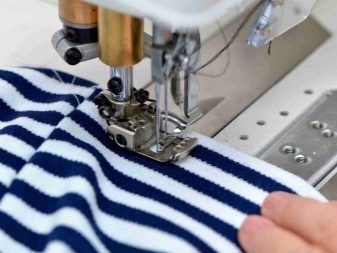
Which car is right for you?
If you use an ordinary household machine at home, and besides, it is not a modern model, then sewing knitwear will present a certain difficulty for you. But if you put into practice the advice of experienced needlewomen, then the task can be dealt with.

Plain
Modern models can perform many different curly seams. Therefore, when applying some tricks you can make a sewing of delicate fabric.
Let us consider separately the seams that can be used when stitching knitted halves.
- Straight stitch it has a right to exist if you sew a slightly stretch fabric. Usually it has a characteristic thickness.
- Stretch stitch can be applied when you are going to make a vertical seam. For horizontal joints, this direction is undesirable, since you will get a strong stretch of the canvas. However, in the latter case, the release may be the weakening of the pressure of the foot.
- Zigzag stitch even the oldest cars can do it. This option is most suitable for sewing stretching fabrics.
- Wide Zigzag (No. 10) gives a very good elongation, and such a seam does not break when the canvas is tensioned.
- If on your car if there is a function of a line imitating a basting, then you are lucky. This seam is considered optimal.
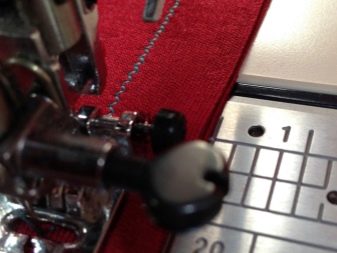
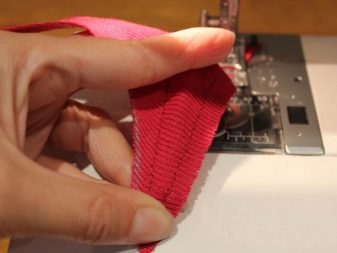
Consider another question about why the sewing stage of stretching fabrics is difficult. The problem may be hiding in the wrong needle. Those needles that are installed on household machines are not suitable for sewing knitwear. Too sharp ends of such instances often tear the weave of the knitted fabric. In addition, a sharp needle, when there is a line in knitwear, contributes to the appearance of too small loops near the eye of the needle. And the shuttle nose is designed so that it passes by such a loop, without capturing the upper thread. Here is the reason for the appearance of passes.
For the process to go better, it is worth replacing a sharp needle with a special one with a rounded point. It is these instances designed for sewing delicate fabrics.
This type of needle does not pierce the fabric fibers, but smoothly passes between them, and then it becomes possible to create a loop.
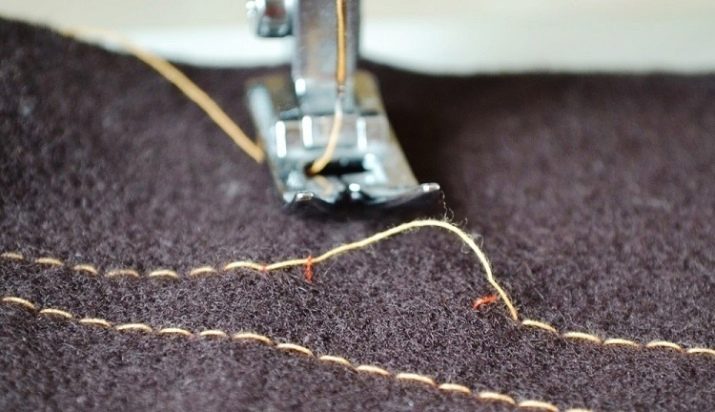
Knitted
Let's say that a model is suitable for home needlework, which to some extent can connect the knitted halves. However, such seams will not differ in high quality anyway. And if you want to approach the sewing of knitwear from a professional point of view, then you are unlikely to like this option. You just need to know that highly stretching fabrics are sewn and not sewn on a sewing machine. Such actions are performed on the overlock.
Sewing machines, called overlock machines, can only imitate overlock seams, since they do not have a special differential gear rack built in. It is this detail that is the basis that allows you to stitch knitwear in a quality manner.
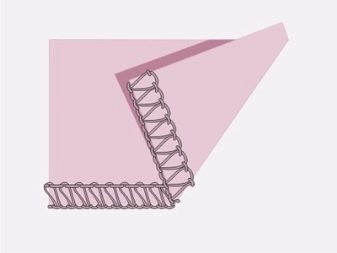
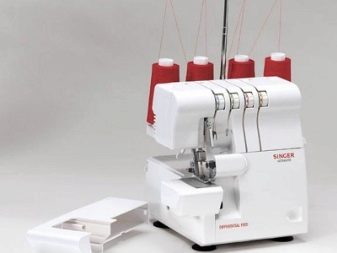
So, we can conclude that the smallest knitwear is wrapped with a 3-thread overlock seam. Many overlocks perform it with ease. For knitwear grade 5 middle knitting need a 4-thread seam.A larger knit fabric can be sewn with a 5-thread seam, which consists of a 2-thread chain and 3-thread overlock seams. However, not all overlocks can perform quality knit stitches.
And to make seams in this direction, you need a machine that will cost more and fully meet all the requirements. A machine with a special direction will definitely cope with the task of sewing knitwear.
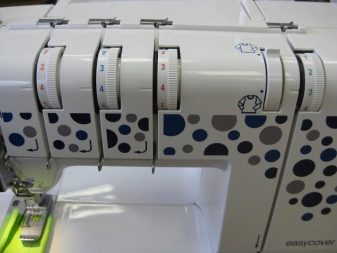

Needle selection
At this time, consumers are offered various types of needles. Homeworkers or professionals can only make the right choice. It all depends on the type of sewing machine. Almost all types of needles are suitable for many models.
For knitting needles need to be selected, taking into account a number of nuances.
- Models used to stitch knitwear should have a rounded end. For special-purpose needles, look for Jersey and Ball Point labels.
- The eye of the needle should pass easily through the fabric. Knit needles have a slightly smaller eye than simple units. For sewing stretching fabrics, these are exactly the needles you need to buy.
- Knitting needles should have several grooves (notches).
- The rods should be of medium thickness.
- The size of the needle should match the flask into which it will be inserted.

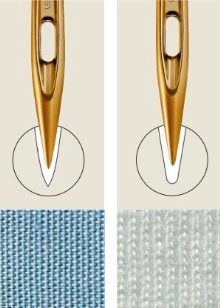
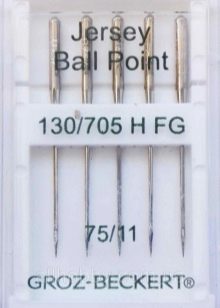
Threads and their tension
Household sewing machines do not work well if they are equipped with knitting threads, rather than ordinary cotton threads. And so that the work goes smoothly, and the seam on the knitwear is good, you need to choose the right thread and try to adjust their tension. Please note that knitwear must be sewn with elastic threads, which are based on synthetics. They can be easily bought at the store. Definitely coarse and thick cotton threads will not work.
Thread entanglement and breakage can be eliminated by adjusting the tension. However, if you sew with special threads, then these actions will not be needed.
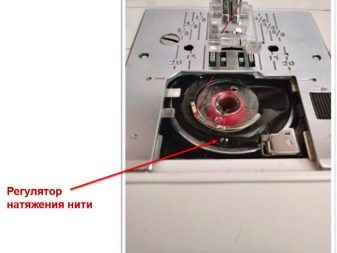
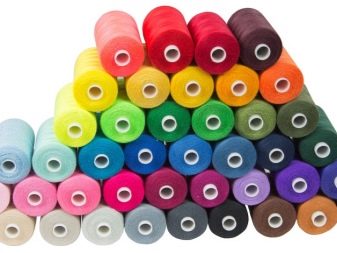
Basic sewing rules
So, the stretch and stretch fabric on a regular sewing machine can be easily sewn if you apply some tricks. It is even possible to get an elastic straight seam by stitching it at home on your beloved assistant. The knitwear almost does not crumble, therefore, it is not necessary to overcast it. To make the task doable, you need to consider simple rules.
- If you start stitching 2 halves of a dense and slightly stretchable knitwear, then a straight line will do here.
- For other cases, a simple way is not good. More capricious types of knitwear or stretch fabrics require elastic seams, such as zigzag. The main thing is to choose the right thread and choose its tension.
Here are a few more secrets. Some experienced housewives put thick paper under the knitwear (you can put a newspaper). Thus, they “deceive” the sewing process. The machine makes a stitch on a dense basis and at the same time sews delicate fabric. Thus, it is less torn and stretched. After sewing, the paper is removed. You can not say about the gauze pad.
Seamstresses use this technique if they do not have the right equipment at hand.

See how to sew knitwear on a sewing machine in the next video.











